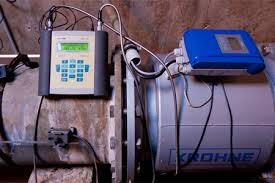The True Cost of Water Loss: It’s Not Just Non-Revenue Water (NRW)
Every day, water utilities face pressure to minimize operational and capital expenses but still meet ever-increasing demand. With rate increases as rare as they are unpopular, cost remains the primary target. One big cost for most water utilities is water loss or “non-revenue water (NRW).”
All water entering a distribution system is either “accounted for” consumption, or it is water loss.
It is rare that a water utility isn’t greatly challenged by water loss — the difference between total water produced and total billed, or otherwise accounted for usage, such as system flushing, hydrant use. What isn’t metered and billed for is NRW, but it’s more than just lost revenue.
Water loss drives costs higher. Costs of operation are increased as production and distribution work to push more water. More operation means more maintenance and more expense. Several water utilities are facing significant capital improvements and plant upgrades, just to overcome water loss. Or, they are purchasing water from a neighboring utility to make up the difference. This is why water loss is not just NRW, non-revenue water.
With so many pieces to this puzzle, understanding this cost and driving improvement is a challenge. Aging infrastructure, unauthorized consumption and metering inaccuracies are just a few of the root causes of water loss.
Minimizing Water Loss
According to the EPA, the first step in minimizing water loss is to conduct a water audit by gathering information on the distribution network. The quickest way to get started is to identify and evaluate all flow meters in the system.
A water audit almost always finds percentage points of improvement in identifying and correcting inaccurate flow meters; at the plant and throughout the distribution system. Flow meters should be validated as part of any water audit; and then routinely.
Download Brochure: Flexim Water and Wastewater Solutions
The most widely used Potable Water Meters: fall into one of these categories:
Fixed Spool Piece
- Turbine
- MagMeter
- Venturi
- DP Cell
Affixed “Clamp-On”
- Transit Time Ultrasonic
These techniques have their advantages and disadvantages. One main issue is, after installation, these meters are rarely if ever, verified for proper operation. Over time, the accuracy of meters are greatly affected by normal wear on mechanical parts; or build up of scale, water treatment chemicals. Its impractical to service a 150RF flanged spool piece; so it often goes unchecked.
Another accuracy challenge with these techniques is low velocity. Something below 1 fps can be troublesome to some of these meters; and, minimally take it out of its range and accuracy spec. Night flows, valves not seating, and leaks are hard to catch if your meter doesn’t start reading until 50/100 GPM, for example.
One common method of validating a ‘fixed’ closed pipe flow meter is with ‘an affixed’ portable Clamp-On Transit Time Meter.

The sensors quickly attached to the outside of the pipe.
From 1/4 inch chemical feed lines to major transmission lines, the transit time can read very accurately.
Permanent models are a great alternative to traditional fixed techniques, in that they are NIST traceable, adjustable, and can be adjusted for signal optimization, relocated and re-calibrated.
The EPA encourages utilities to control water loss with a water audit, intervention and evaluation.
CC Lynch has worked with many customers to conduct water loss audits and identify systems improvements that can reduce operational costs. Contact us today for more information.

